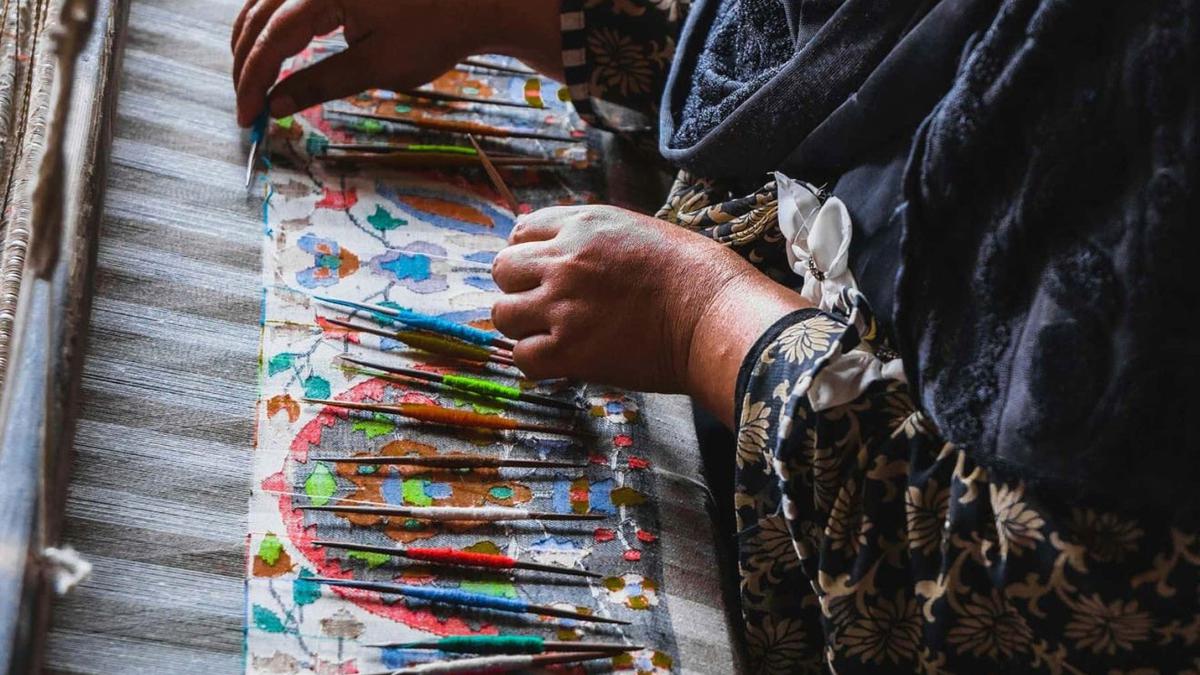
GI tags bring back women artisans to whirring charkhas in Kashmir
The Hindu
GI tagging revives traditional hand processes for shawls and carpets in Srinagar, empowering women artisans and boosting exports.
Most houses in Srinagar’s Nawa Kadal area used to be abuzz with the whirring noise emanating from charkhas and spindles. Introduction of machines to bypass hand-driven processes for manufacturing shawls and carpets muted these houses, with hundreds of women artisans forced to discontinue. However, the move to tag handmade shawls and carpets with Geographical Indications (GI) labels is finally bringing women artisans back to charkhas and spindles.
Nazima Jan from Nawa Kadal in the old city was a third-generation pashmina artisan and quit pashmina spinning 10 years ago. “The hand-driven processes like dehairing, spinning, and weaving almost vanished in the past three decades due to the introduction of machines. I decided to shift my daughter from this age-old family profession to become a beautician,” Ms. Jan said.
The GI labels, however, are fast transforming the art scene in Kashmir. “GI tagging has been crucial for preserving and reviving traditional methods used in making shawls and carpets. It emphasises authentic hand-spun yarn. It safeguards traditional hand processes associated with these crafts, preserving their cultural significance and authenticity,” Mahmood Shah, Director, Handloom and Handicrafts, Kashmir, told The Hindu.
While shawls are made of pashmina, wool and silk are used to make carpets. Intricate hand-weaving techniques are used; for example, Kani shawls are woven by using needles made from cane or wood and not shuttles. All have traditional designs like ‘buta’ or paisley pattern. Both shawls and carpets were granted GI tags as registered products.
The impact of GI tagging is evident from different clusters operating in the old city of Srinagar. Mujtaba Qadri, who owns the label, Me&K, has trained 500 women to enhance their spinning skills and collaborates with 1,500 women to produce hand-spun yarn for his products. Wages for women, spinning 10 threads with 10-inch yarns, is up to ₹2. So, on an average, women spinners earn ₹6,000 and weavers up to ₹20,000 per month.
“Most cashmere shawls today are made of machine-made yarn. It has negatively impacted the livelihood of hundreds of women artisans. The GI tag has helped restore the traditional process of shawl weaving. It has led to an increase in the number of women engaged in this work and their financial empowerment,” Mr. Qadri said.
Around 3.5 lakh artisans create handmade products in Kashmir, home to at least 16 unique crafts. Women once made up 47.4% of the workforce in the handicrafts sector in Kashmir, which has seen a dip in the past two decades, officials said. Unofficial figures suggest that over 10,000 women quit spinning pashmina by 2017.











